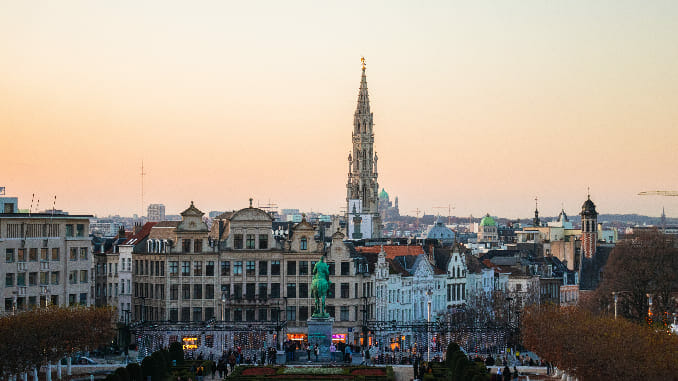Brussels: The Most Underrated Northern European City?
Photo by François Genon/Unsplash Travel Lists travel
There are many European cities on the standard American study abroad/gap year/retirement trip map: Paris, with its glittering lights and trash-strewn streets, Venice, with its charming hidden canals and hordes of carbonara-stuffed tourists, Lisbon, with its pastéis de nata and steep, slippery streets. But there is one major Northern European city that’s often forgotten by the interrailers, backpackers and retirees, largely unappreciated by visitors to the continent despite its gorgeous architecture, fantastic food and accommodating culture: Brussels.
The European Commission calls Brussels home, which is partially why it’s such an incredibly diverse city: In 2016, Slate reported that 70 percent of Brussels residents were immigrants. More of half of those immigrants come from outside of Europe entirely. The result is a city where you can walk down the street and hear five different languages in 10 minutes. Where you can find Ethiopian cuisine right next to the Turkish restaurant that’s across the street from the French-style café. Where you can meet new friends from all over the world without venturing out to more than a single bar.
While French and Dutch are the languages most commonly spoken in Brussels, in many parts of the city, it’s easy to get around speaking only English—perfect for beginner travelers who aren’t ready to swallow an eye roll from a French store owner when they apologetically start speaking English.
I’ve asked some Belgians what visitors should do and see apart from the usual tourist spots, and here’s what they told me:
1. Try Moules Frites
If you’re like me, the first thing you want to do when you visit a new city is get a sense of its culinary scene. And in Brussels, an important part of that scene is moules frites, Belgium’s national dish. Mussels and fries are truly a match made in heaven, and you’ll have the chance to experience the delight that is moules frites at a variety of restaurants around town. Perhaps the most famous spot to snag the dish, though, is Chez Leon, located in the heart of the city.
2. Grab a Drink and Hang Out at Jardin Hospice
For those who want to chill out for a while amidst a young, cool crowd, a trip to Jardin Hospice is a must. This garden has been transformed into an event space where you can find live music, games, crafts, food and drink year-round. I went during a summer weekend afternoon, and the garden was buzzing with activity while still maintaining a relaxed vibe. It may just be the perfect place to indulge in some raclette while you wait for the next performer to take the stage.
3. Do Some Shopping at Melting Pot Kilo
A thrifter’s dream come true, Melting Pot Kilo is the place to go if you want to find amazing vintage pieces for cheap. Here, you won’t see any price tags on the clothes because you’ll pay according to weight: €15 per kilo. (For the Americans who have no clue how much a kilo weighs, no worries—there are scales for you to use at the store before you check out.) There is definitely some really cool stuff on the rack here, and though it can take some searching to find what you’re looking for, it’s a great way to spend an afternoon in Brussels on a cloudy day.
4. Check Out the Art at the Magritte Museum
Belgian artist René Magritte may have been slightly less famous than his celebrated Spanish counterpart, Salvador Dalí, but if you’re into Dalí’s surrealist landscapes and mind-bending paintings, then there’s an excellent chance that you’re going to love the Magritte Museum as well. The museum takes you through Magritte’s work throughout the years, offering glimpses of paintings you won’t see elsewhere. I’m not usually a big museum-goer, but I have to admit that I had a lot of fun at this one. Magritte has always been one of my favorites, but I also appreciate how the museum is set up. Also, it’s relatively small, so you won’t be there for hours—if you’re looking for something fun to do between lunch and an early dinner, you can’t go wrong.
5. Explore Matongé, One of Brussels’ Coolest Neighborhoods
Brussels is home to a large community of African expats, and the cultural influence from the continent is perhaps most palpable in the Matongé neighborhood. Congolese students began flocking to Brussels starting in the 1950s, and many ended up settling in Matongé. Now, it’s an excellent neighborhood to check out if you want to indulge in Congolese cuisine, watch a French-language indie film at the popular Cinéma Vendôme or go shopping at one of the many fashion boutiques or food shops, where you can often find produce that European chain supermarkets don’t carry.
Samantha Maxwell is a food writer and editor based in Boston. Follow her on Twitter at @samseating.